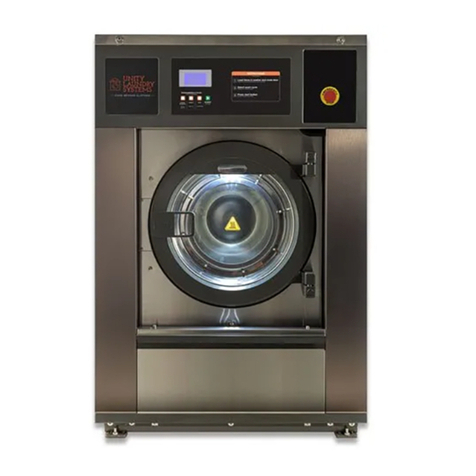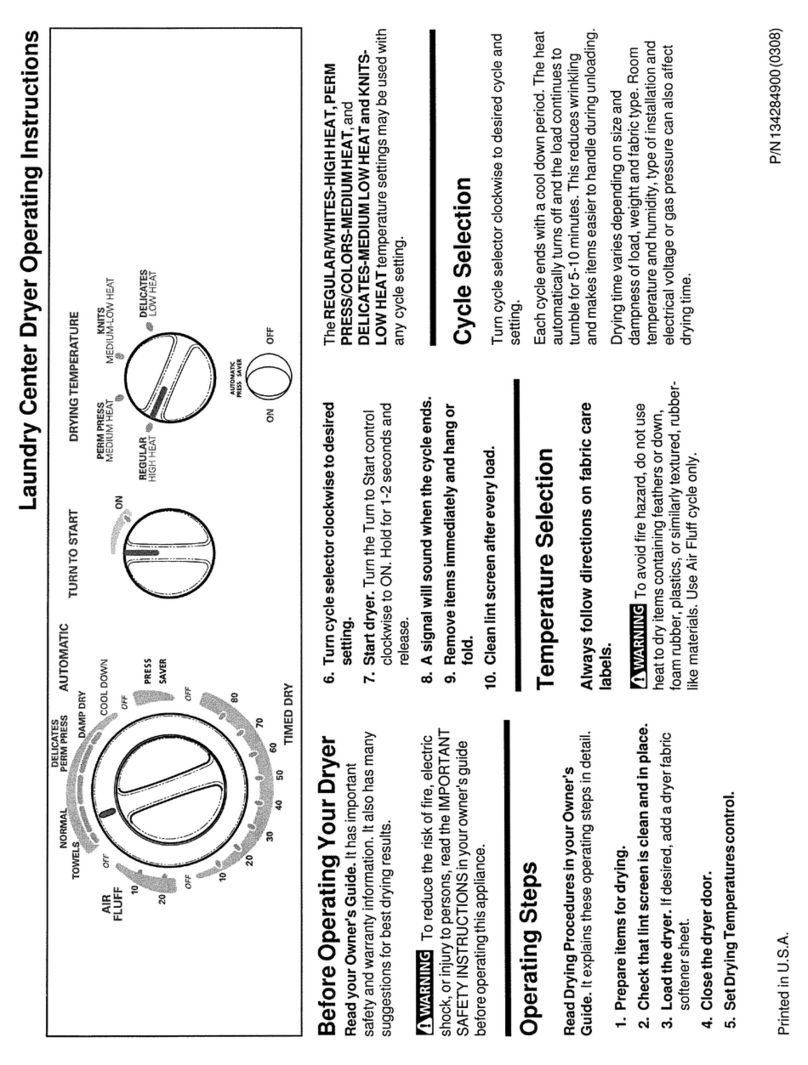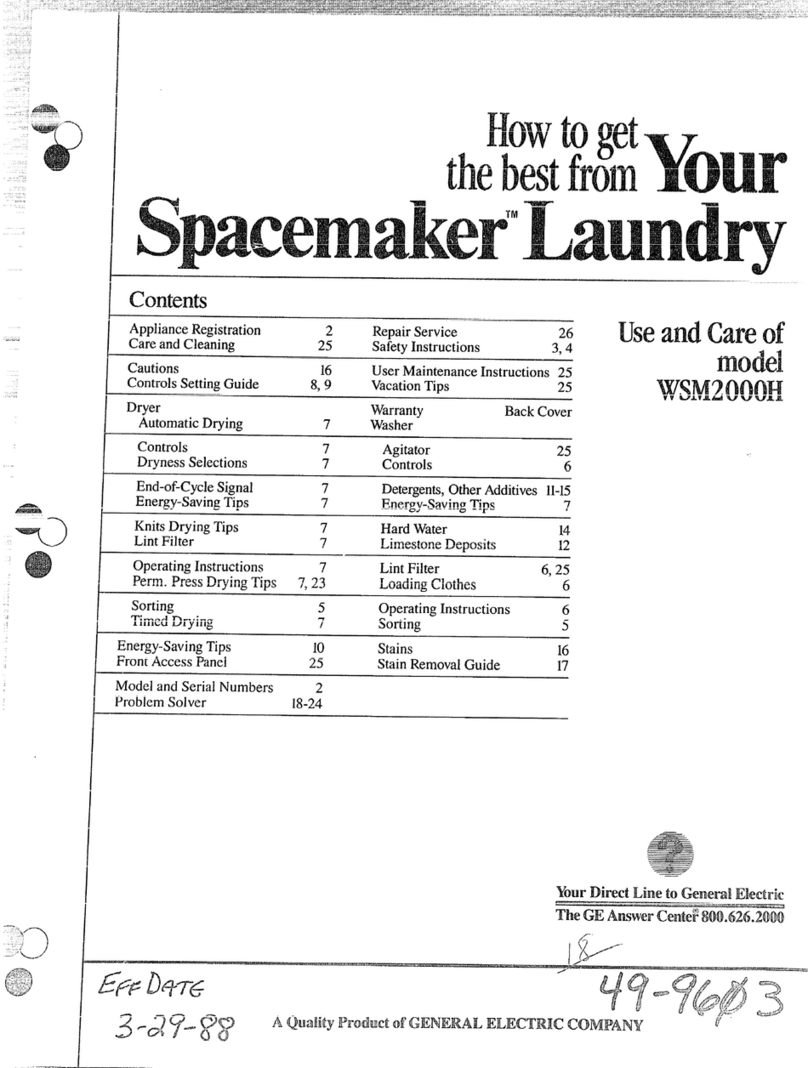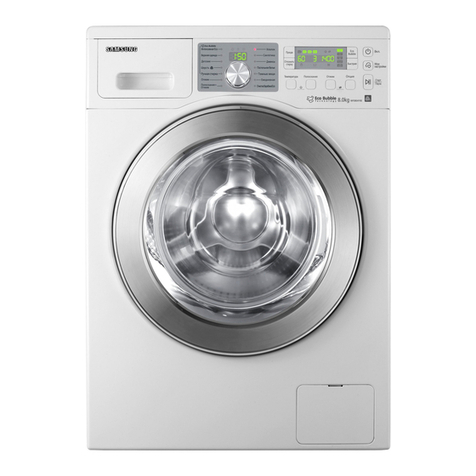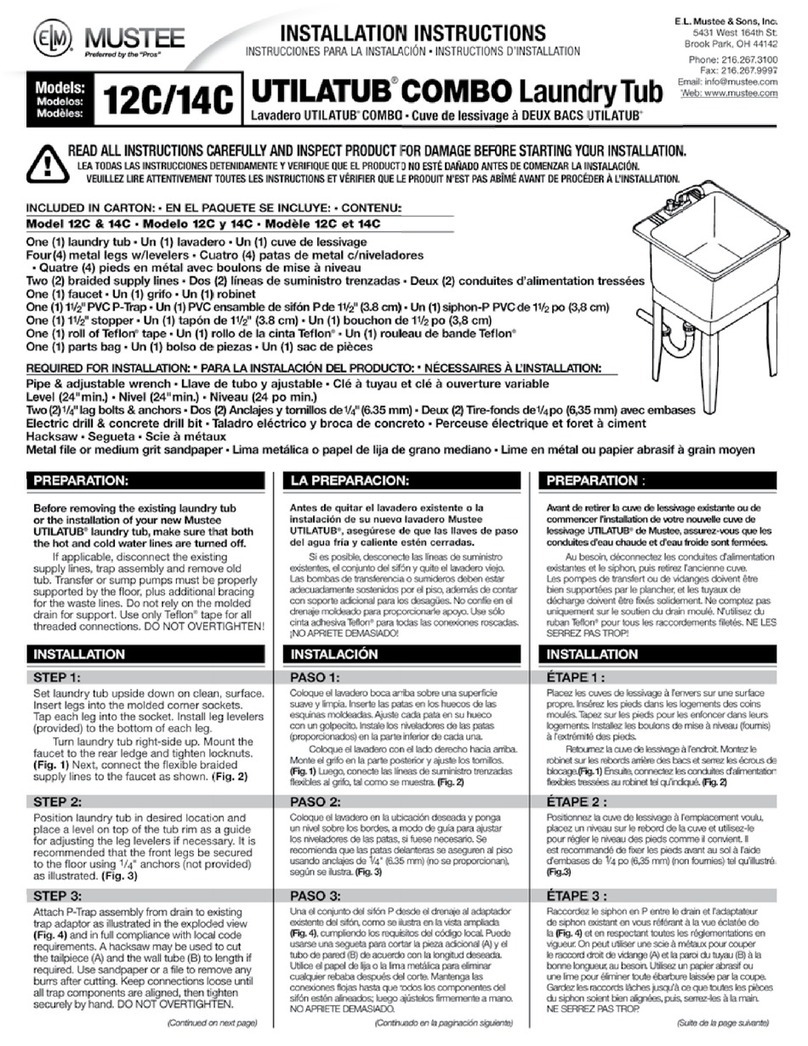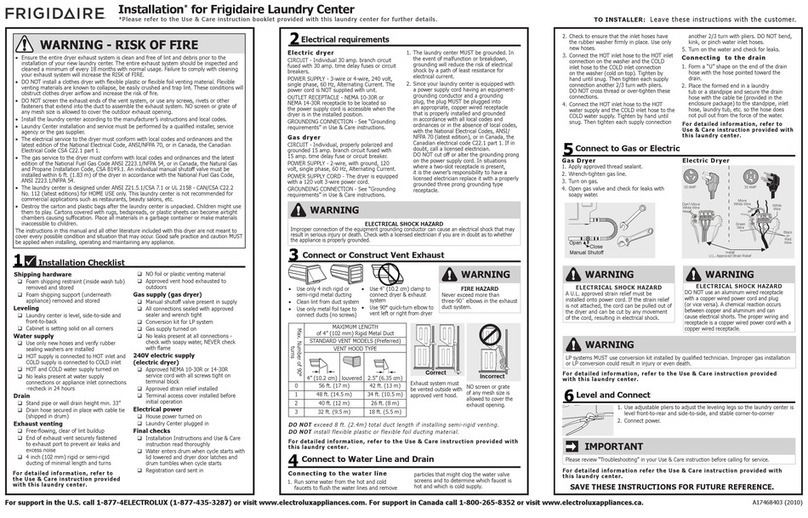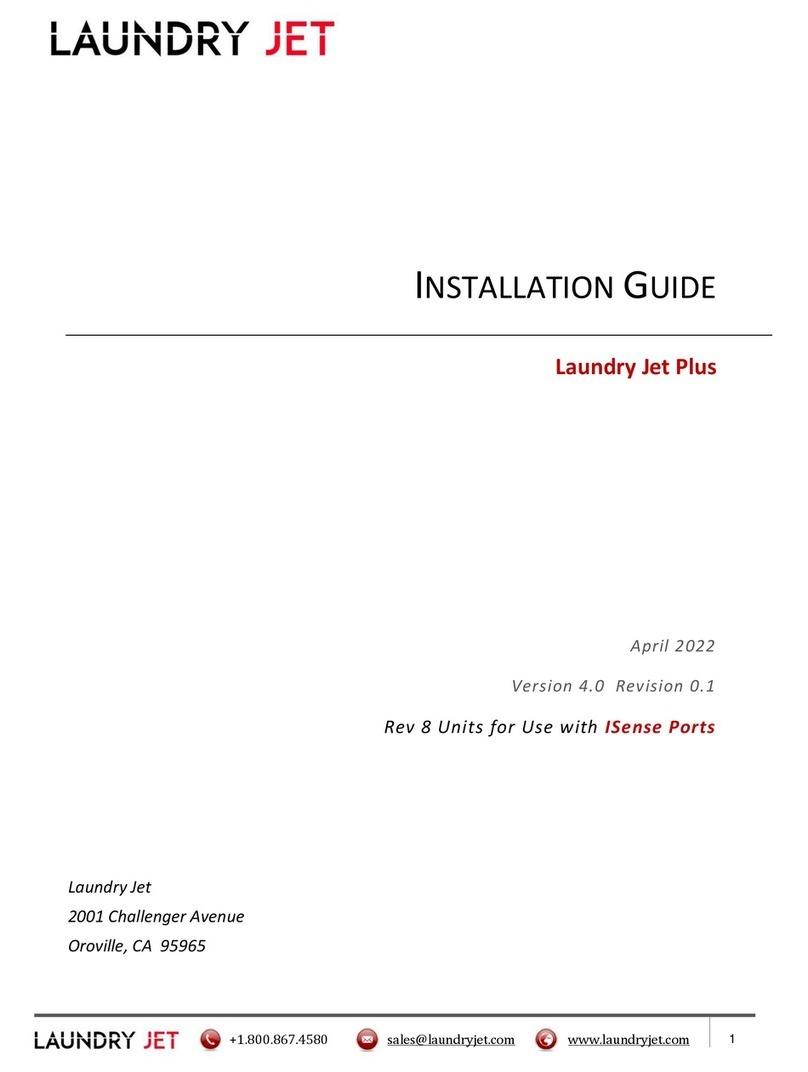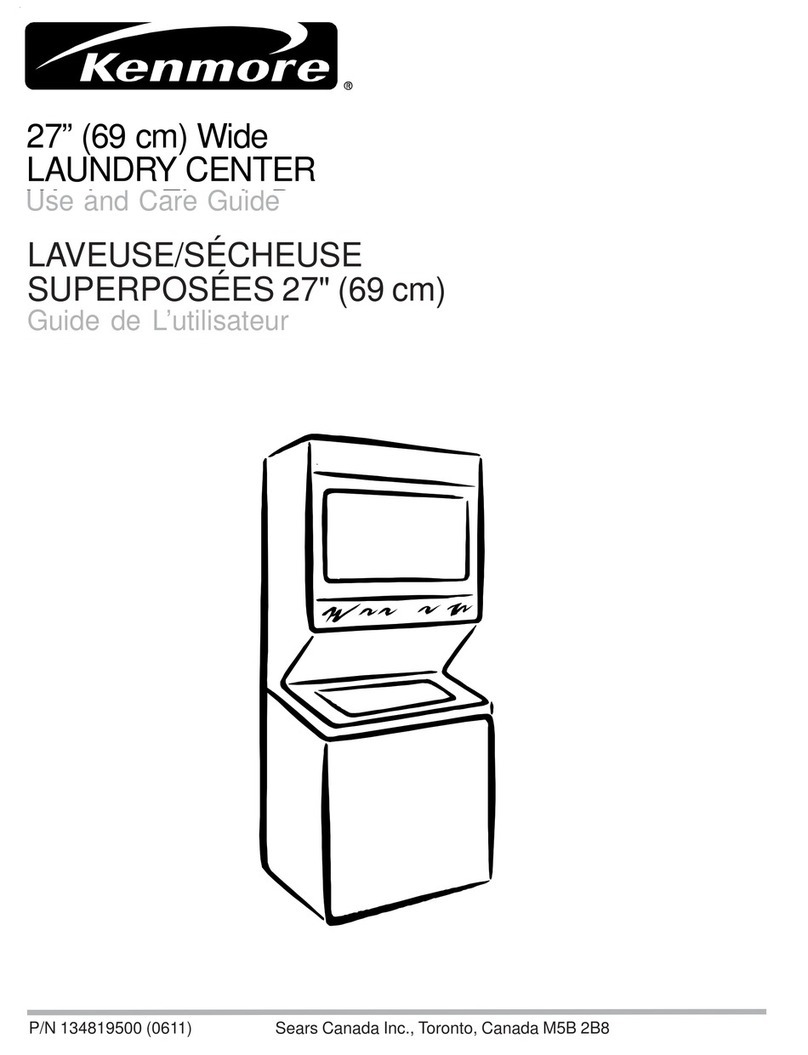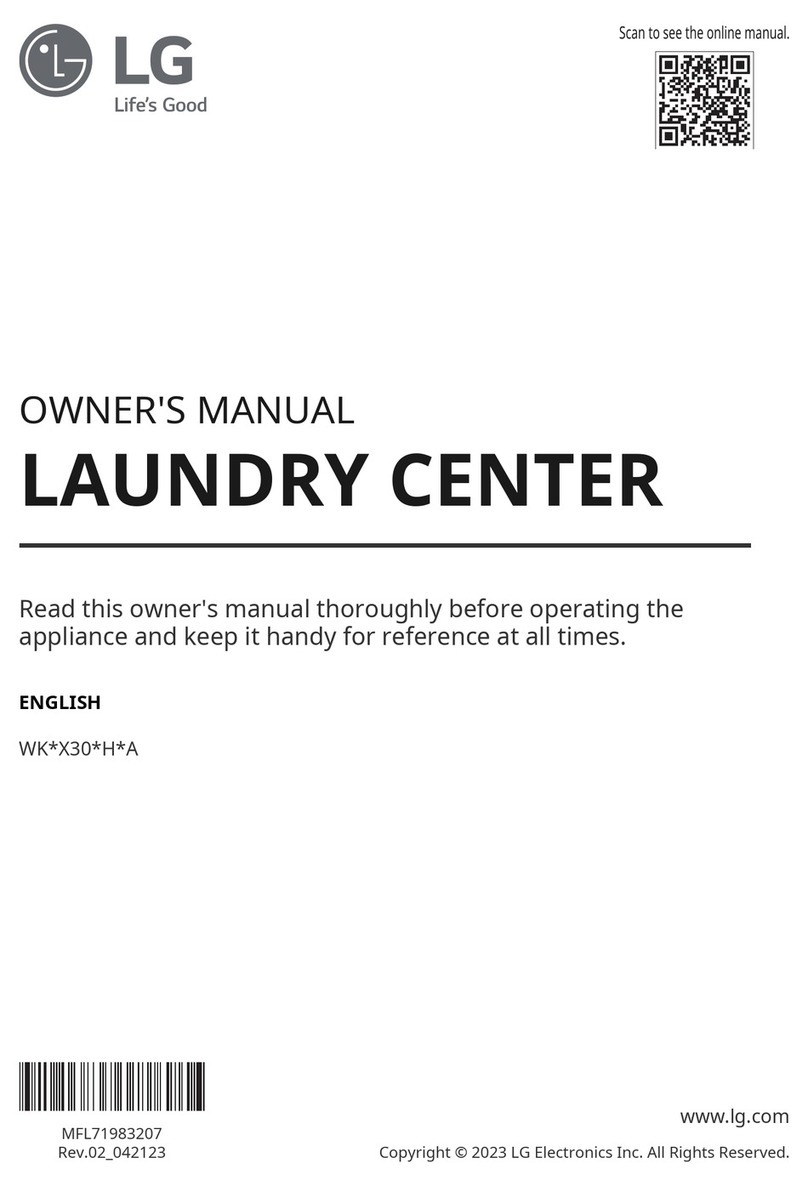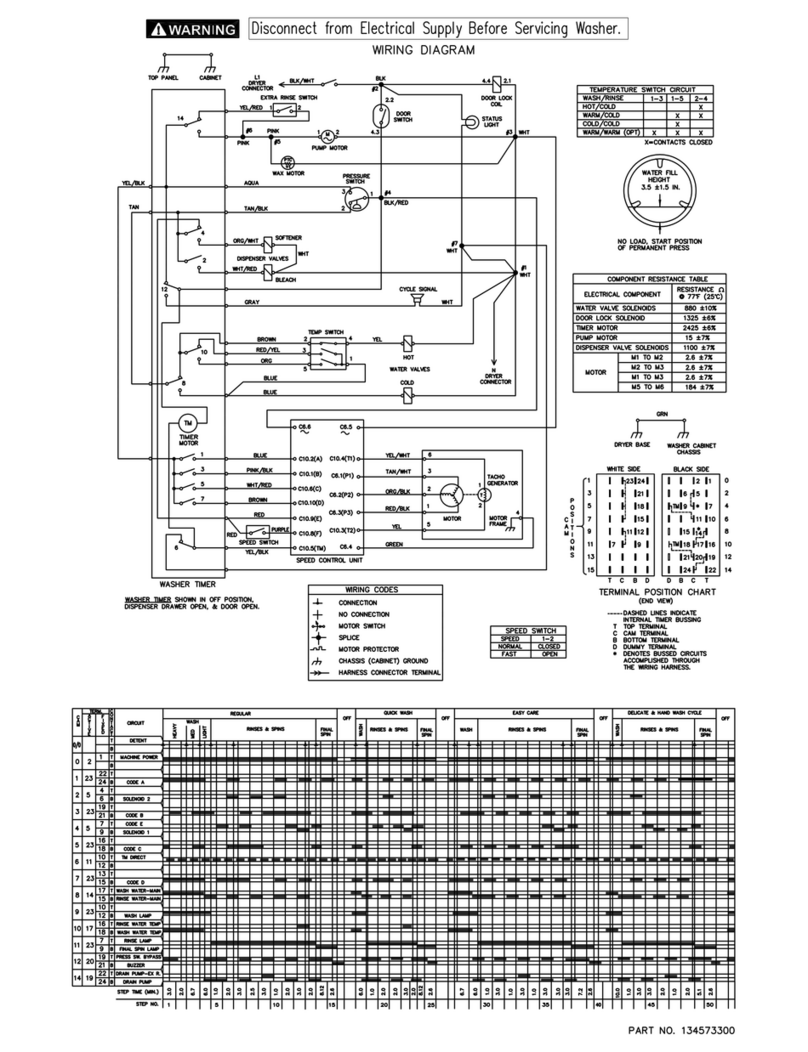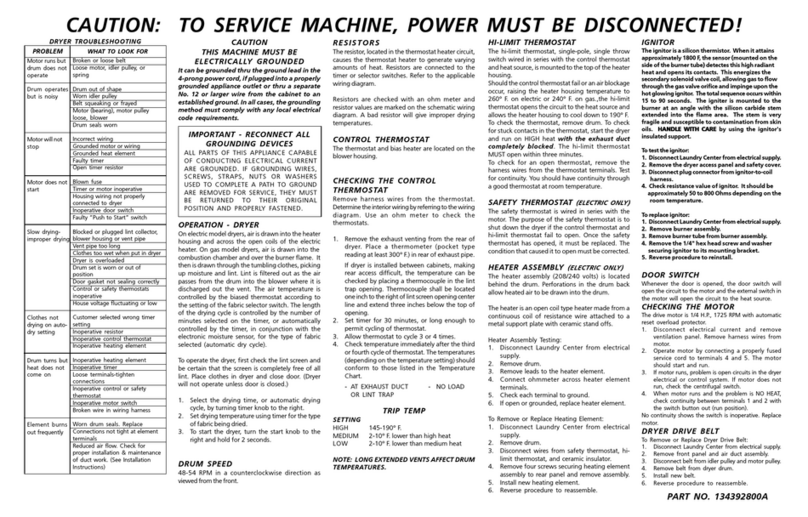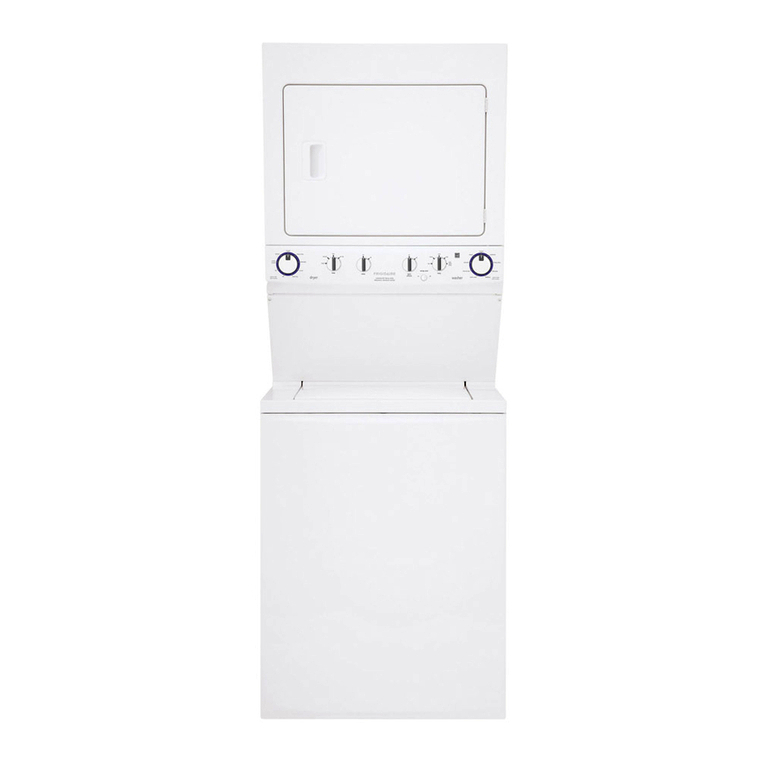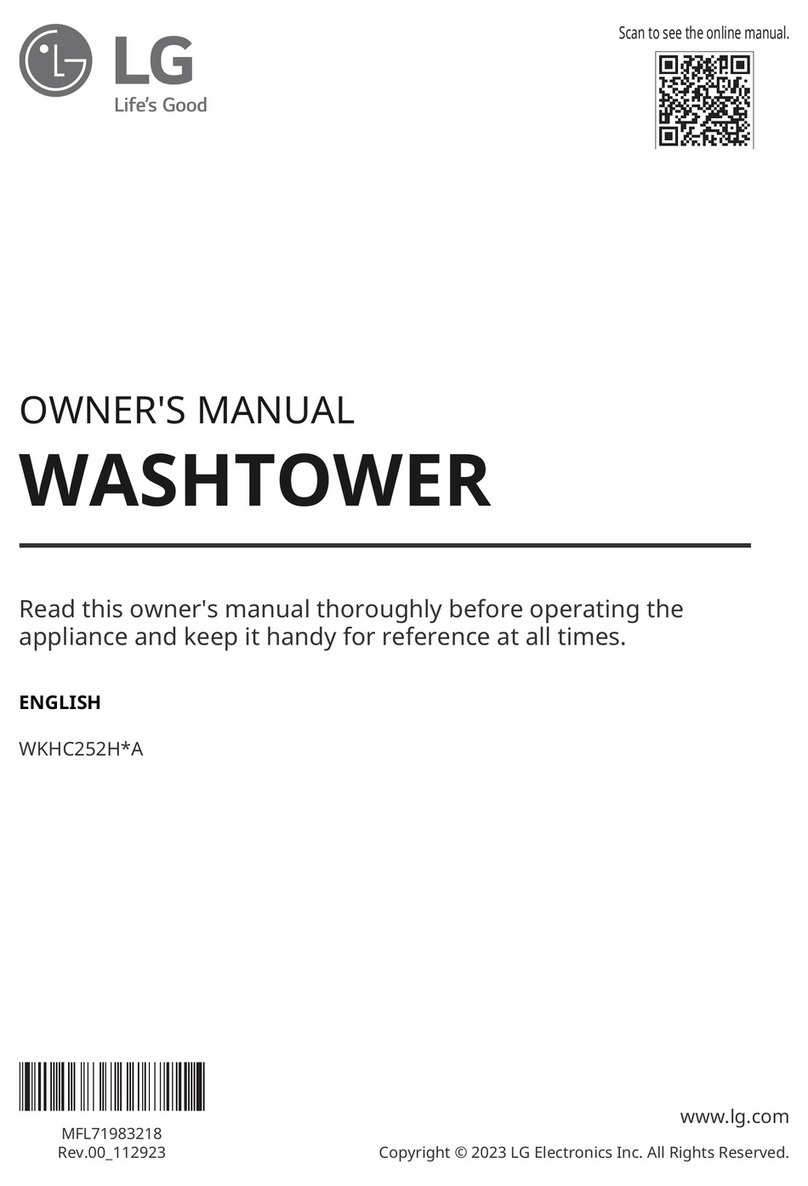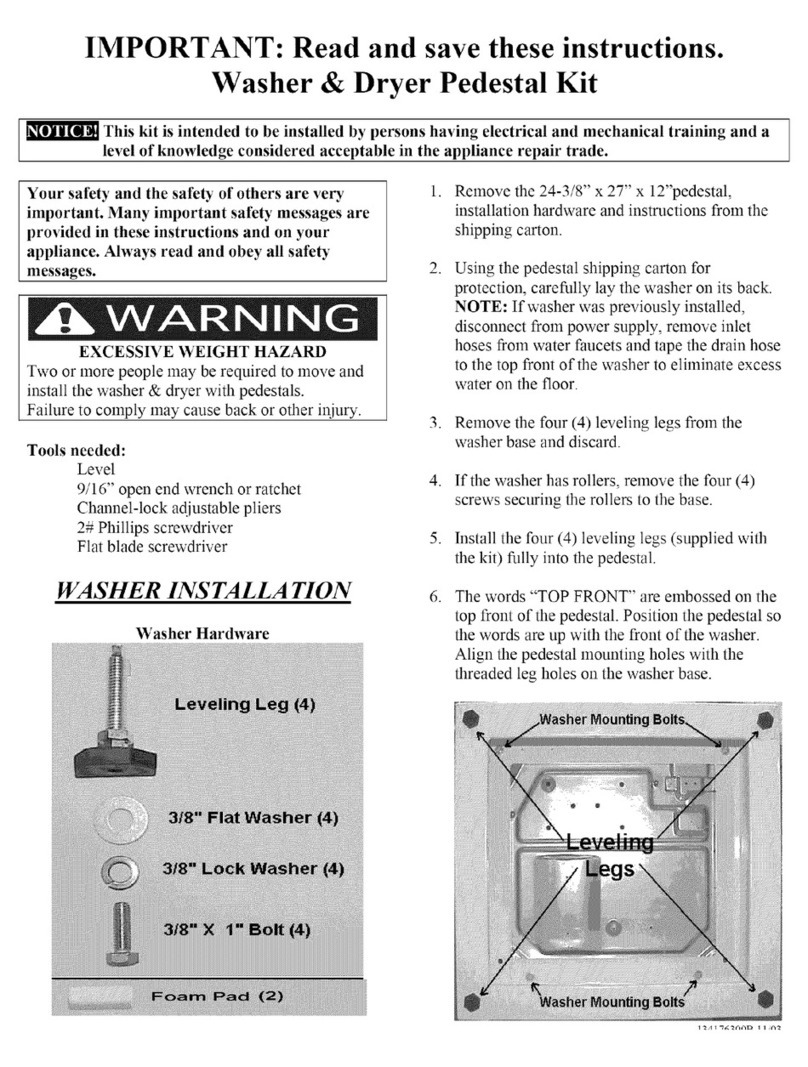
3
Important Safety Information
In the interest of your safety and to ensure the correct use, before installing and first using the appliance, read this
user manual carefully, including its hints and warnings. To avoid unnecessary mistakes and accidents, it is impor-
tant to ensure that all people using the appliance are thoroughly familiar with its operation and safety features.
Save these instructions and make sure that they remain with the appliance if it is moved or sold, so that everyone
using it through its life will be properly informed on appliance use and safety.
General safety
• It is dangerous to alter the specifications or attempt to
modify this product in any way.
• Make sure that small pets do not climb into the wash tub
or dryer drum. To avoid this, please check into the tub and
drum before using.
• Any objects such as coins, safety pins, nails, screws,
stones or any other hard, sharp material can cause exten-
sive damage and must not be placed into the machine.
• Only use the advised quantities of fabric softener and
detergent. Damage to the fabric can ensue if you over-fill.
Refer to the manufacturer’s recommendations of quantities.
• Wash small items such as socks, laces, washable belts
etc. in a washing bag or pillow case as it is possible for
such items to slip down between the tub and the inner
drum.
• Do not use your appliance to wash articles with whale-
bones, material without hems or torn material.
• To avoid damaging the appliance and personal injury, DO
NOT hang on or lean against the dryer door.
• Do not place detergent, bleach or fabric softener contain-
ers on top of the appliance. They can damage the finish or
controls.
• Always unplug the appliance and turn off the water supply
after use, clean and maintenance.
• Under no circumstances you should attempt to repair the
appliance yourself. Repairs carried out by inexperienced
people may cause injury or serious malfunctioning. Contact
your local Service Centre. Always insist on genuine spare
parts.
• Items that have been soiled with substances such as cook-
ing oil acetone, petrol, kerosene, spot removers, turpen-
tine, waxes and wax removers should be washed in hot
water with an extra amount of detergent before being dried
in the tumble dryer.
• Danger of explosion: Never tumble dry items that have been
in contact with inflammable solvents (petrol, methylated
spirits, dry cleaning fluid and the like). As these substance
are volatile, they could cause an explosion. Only tumble dry
items washed with water.
• Risk of fire: items that have been spotted or soaked with
vegetable or cooking oil constitute a fire hazard and should
not be placed in the tumble dryer.
• Ensure you have adequate ventilation in the installation
room to avoid the back flow of gases into the room from
appliances burning other fuels, including open fires.
• If you have washed your laundry with stain remover you
must execute an extra rinse cycle before loading your
tumble dryer.
• Please make sure that no gas lighters or matches have
accidentally been left in pockets of garments to be loaded
into appliance.
WARNING! - RISK OF FIRE!
Never stop a tumble dry before the end of the drying
cycle unless all items are quickly removed and spread
out so that the heat is dissipated.
Installation
• This appliance is heavy. Care should be taken when mov-
ing it.
• When unpacking the appliance, check that it is not dam-
aged. If in doubt, do not use it and contact the Service
Centre.
• All packing and transit bolts must be removed before use.
Serious damage can occur to the product and to property
if this is not adhered to. See relevant section in the user
manual.
• After having installed the appliance, check that it is not
standing on the inlet and drain hose and the appliance is
not pressing the electrical supply cable against the wall.
• Do not install appliance on a carpeted floor.
• Always be sure, that there is no water leakage from hoses
and their connections after the installation.
• If the machine is installed in a location subject to frost,
please read the «dangers of freezing» chapter.
• Any plumbing work required to install this appliance should
be carried out by a qualified plumber or competent person.
• Any electrical work required to install this appliance should
be carried out by a qualified electrician or competent per-
son.
